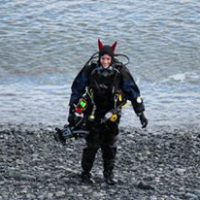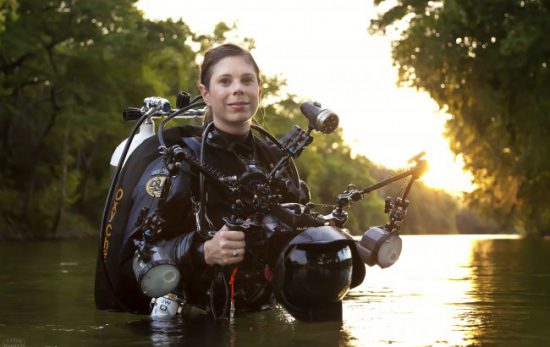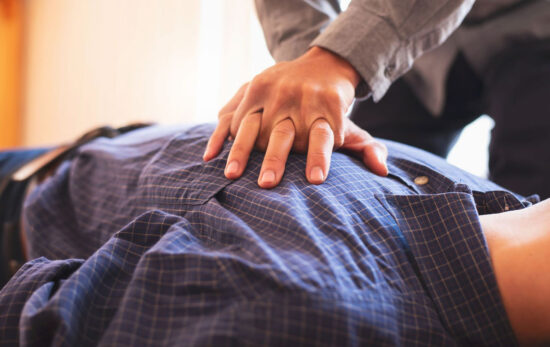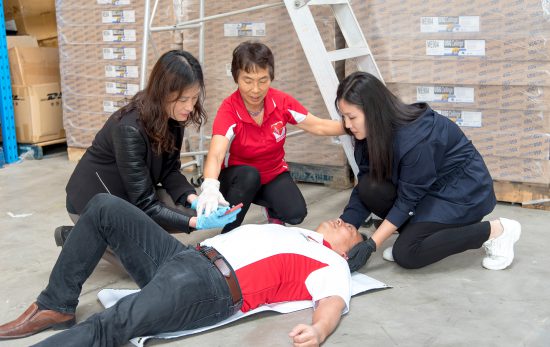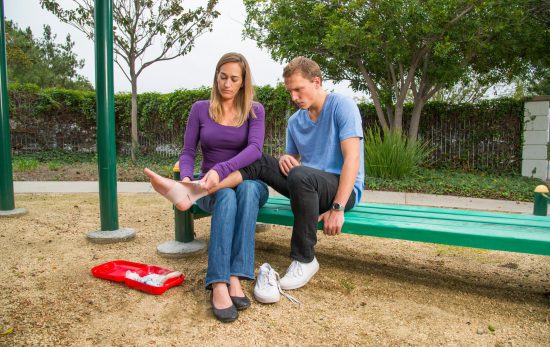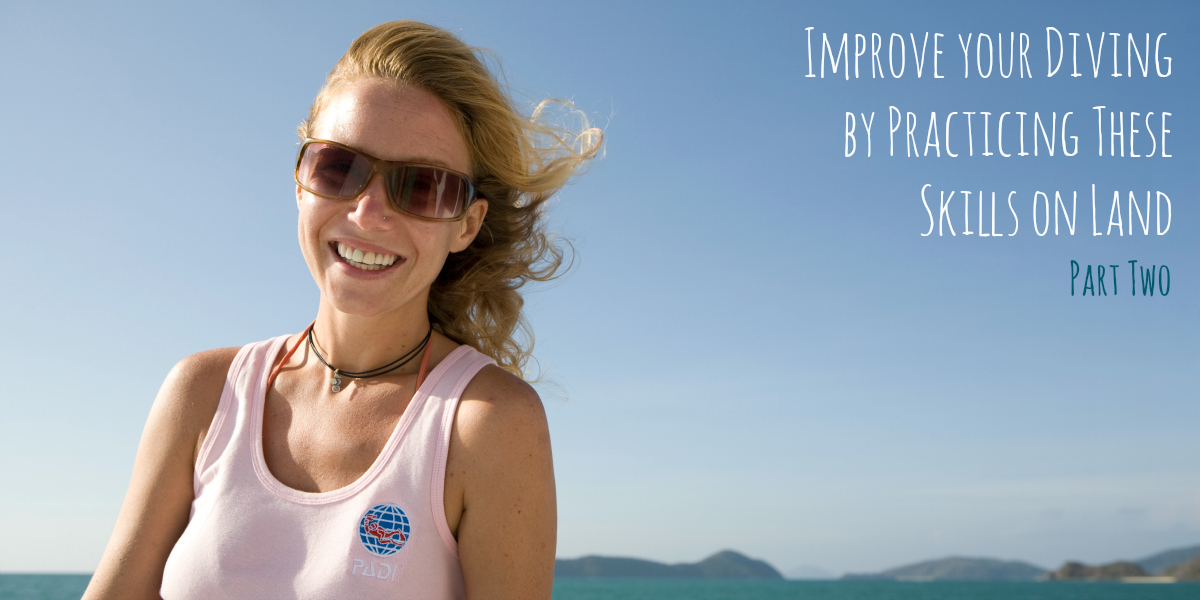
In our recent post, Improve Your Diving by Practicing These Skills on Land Part 1, we discussed navigation, fitness, and photography. But wait – there’s more! Part 2 goes over more things you can practice on land that will enhance your time underwater.
Dive Reels and Lines
If you have a new dive reel then you’ll want to get familiar with your new gadget on land before taking it underwater. Use a fixed point – like a fence, tree or even your car bumper – as an anchor point and lay line across the front yard. Get a feel for the tension you need to keep the line taut. Change direction and get into the habit of tying off your line as you do so. Master the motion of reeling it back to the spool. Place directional markers, and practice holding the reel and flashlight in the same hand.
Once you’ve smoothed your technique, try placing your line and then following it back to your start point using a blindfold (and a buddy to keep you safe).Being competent and quick with your reel and line will be an essential skill if you’re planning to dive in low visibility areas or if you’re planning wreck penetrations or cavern diving.
Search and Recovery skills
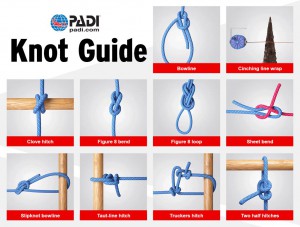 Practice knot tying on the surface so the process becomes automatic. The free PADI App includes animations to help you learn different knots; keep a couple of pieces of rope in your dive bag or car and test yourself when you have a few minutes each day. The faster you can tie off your dive flag, the more time you can spend diving – and a properly-tied knot on your lift bag will help keep recovered objects safe and secure.
Practice knot tying on the surface so the process becomes automatic. The free PADI App includes animations to help you learn different knots; keep a couple of pieces of rope in your dive bag or car and test yourself when you have a few minutes each day. The faster you can tie off your dive flag, the more time you can spend diving – and a properly-tied knot on your lift bag will help keep recovered objects safe and secure.
When planning a search and recovery dive, a dry run on the surface is an excellent way to enhance your effort. Go to an open space with a long rope. Tie your rope to a tent stake and use it as your fixed reference point. Practice a circular search pattern by walking in a circle around your fixed point. Each time you complete the circle, go a little further out from the center. You can also use the rope to practice jackstay patterns, or, if you don’t have rope to hand, practice your compass work with some U search pattern or Expanding square searches. Try asking a friend to ‘hide’ some objects along the way to see how quickly you can find each one.
EFR and Rescue Practice
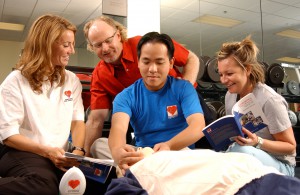 The Emergency First Response course helps you learn how to deal with emergency situations including CPR and First Aid techniques. But even with refresher courses, these skills quickly fade over time, so make sure you keep practicing them at every opportunity so that if the worst should happen, you’re prepared and confident to help. When you regularly practice CPR and first aid on land, knowing what to do in an emergency will become automatic.
The Emergency First Response course helps you learn how to deal with emergency situations including CPR and First Aid techniques. But even with refresher courses, these skills quickly fade over time, so make sure you keep practicing them at every opportunity so that if the worst should happen, you’re prepared and confident to help. When you regularly practice CPR and first aid on land, knowing what to do in an emergency will become automatic.
You can practice CPR on resuscitation dolls if you have them available – otherwise even everyday objects such as pillows or cushions can be used (remember, never practice CPR on a breathing person). Brush up your bandaging skills by practicing on your friends and family, try using your fin to make a splint, and role-play full emergency situations.
Visualization
Mental imagery can be used to improve your diving. When you repeatedly imagine yourself executing the perfect dive, you condition your neural pathways to do so. It makes an impact on your nervous system because your brain benefits from familiarization. Reflect on past experiences – visualize how you could improve your dive next time. Think about different outcomes of various diving scenarios, and imagine how you would respond to each one. By mentally rehearsing your reactions you’ll build up a mental ‘script’ to help guide you on your real dives.
Visualization takes less effort than the exercise regime we mentioned in Part 1 and it’s easy to fit into your daily routine – 5 minutes at bedtime, commuting to work, even on the plane heading to your scuba vacation!
Research
 Although technically not a ‘dive skill’, using your dry time to research and expand your diving knowledge will almost certainly improve your time underwater.
Although technically not a ‘dive skill’, using your dry time to research and expand your diving knowledge will almost certainly improve your time underwater.
Find out everything you can about dive sites and wrecks you’re planning to dive so that you can navigate and locate points of interest with ease. Create a list of critters you want to spot on your next trip and identify the ones you’ve already found. Re-read your PADI course manuals to brush up on your dive theory and remind yourself about core skills and techniques. Maintain and use your logbook as a research tool – what equipment did you use and what weight did you need? What did you find in a particular dive site? What was the best time for diving there?
By arming yourself with relevant scuba knowledge, you’ll have a wider library from which to draw from to help enrich your future diving experiences.
Apart from practicing these dive skills, time on the surface is also a good opportunity to update your logbook, maintain your equipment and start planning your next trip. What other surface activities do you recommend to improve your scuba skills?
